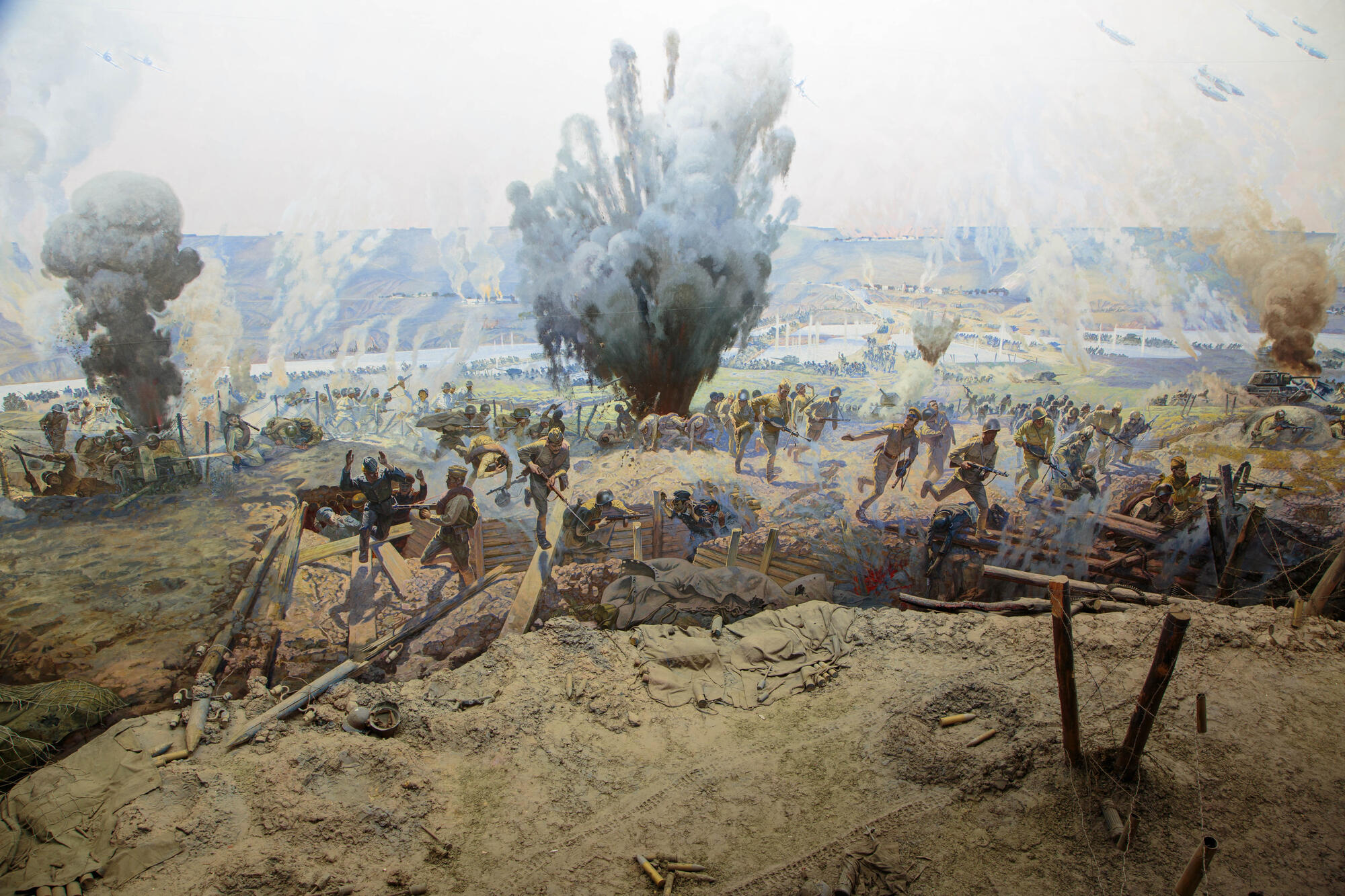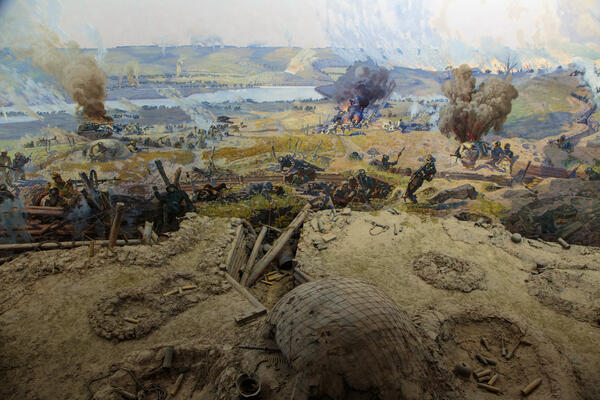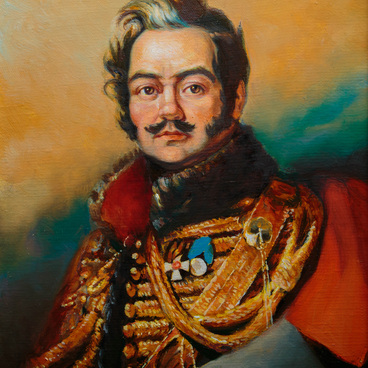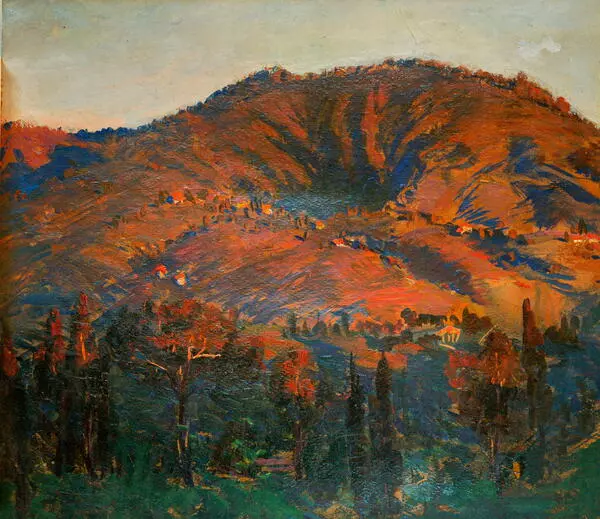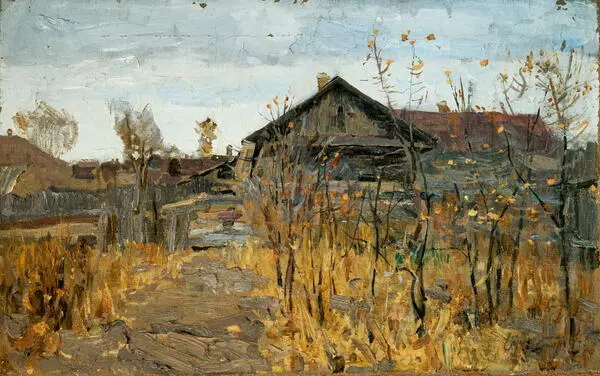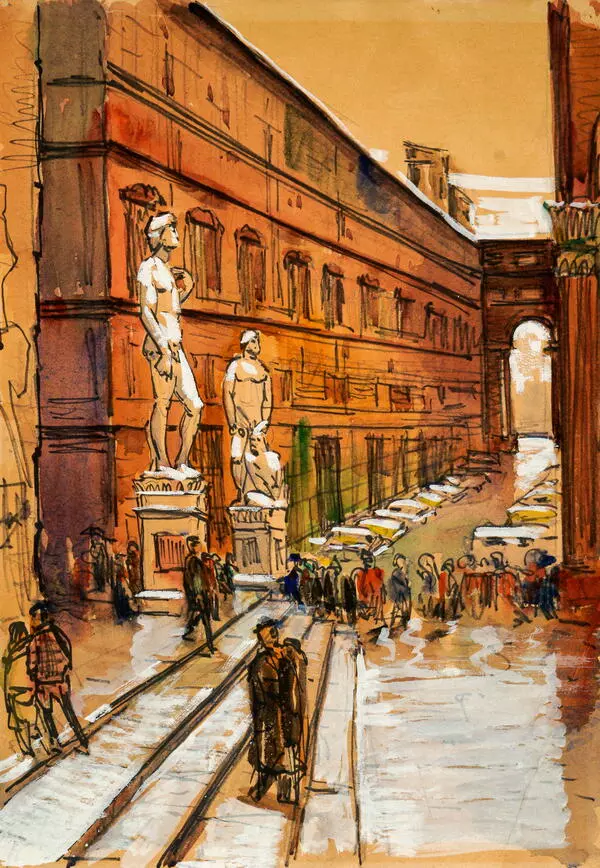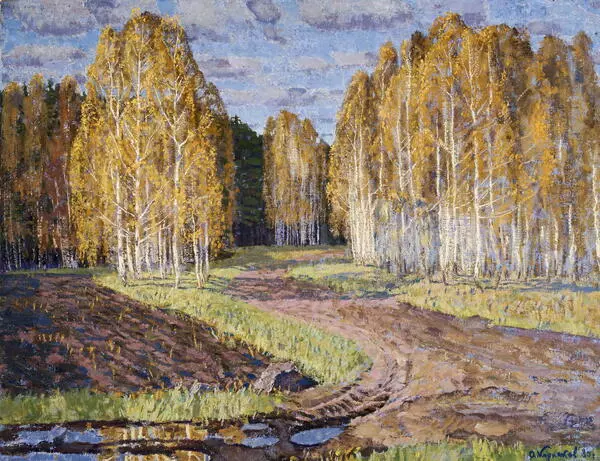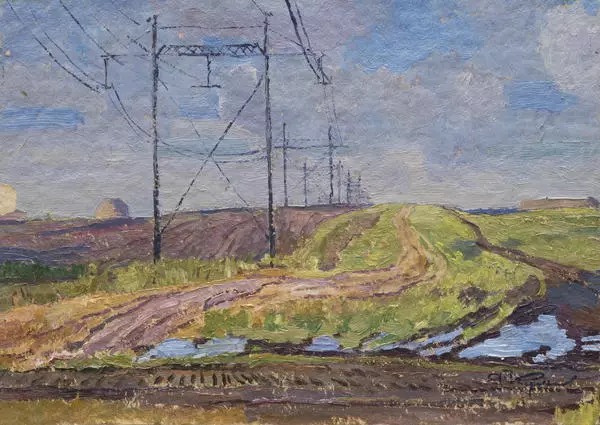The diorama “The Breakthrough of the German Defense at the Village of Maloe Izmailovo on July 12, 1943” was created by Andrey Ilyich Kurnakov, laureate of the Repin State Prize, professor, and veteran of the Great Patriotic War. The work was first exhibited on August 5, 1983. It took six months to complete the diorama, with 13 years of preparatory work. The Bryansk artist Anatoly Mikhailovich Lobko contributed to the creation of this canvas, but it is fully attributed to Kurnakov.
The diorama shows the morning hours of July 12, 1943, when the Soviet troops began breaking through the forward line of enemy troops. The battle took place on a small section of the Bryansk Front in the Novosilsky district near the village of Maloe Izmailovo.
The main role in Operation Kutuzov was assigned to the Bryansk Front, where the main strike groups were the 3rd and 63rd armies. For almost two years, the Nazi troops kept strengthening their defensive line in the Oryol region. Machine guns were installed in the trenches every 50 to 100 meters.
To defend itself, the enemy used a technical novelty — mobile armored pillboxes fitted with machine guns. Field fortifications were protected with wire barriers and minefields: up to one thousand anti-tank and anti-personnel mines were laid throughout an area of 200–300 steps.
All local hills were turned into strong points with perimeter defense. All approaches to the forward line were protected by machine guns, and the enemy fired test shots with mortar and artillery shells to improve shooting accuracy. Hence, when preparing the counteroffensive, it was important to concentrate a large number of troops and all types of military equipment around the narrow areas of the breakthrough.
At 3:28, about 4,000 guns and mortars opened fire on forward and rear enemy positions. Air strikes were also conducted by pilots of the 15th Air Army. In one day, the pilots of the Guards Fighter Aviation Corps shot down 54 enemy aircraft. In total, army attack aircraft and bombers made almost 700 sorties that day.
15 minutes before the
attack, the division’s chemical company fighters laid down a smokescreen. Under
its cover, at 9:30, the soldiers and officers of the regiment crossed the Zusha
River by using pontoon bridges, swimming and wading. The fighters of the 1st Rifle Battalion were the first to attack: on July 11, they conducted
reconnaissance by fire, provoked the enemy to reveal its positions, and gained
a foothold on the west bank.
